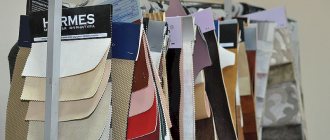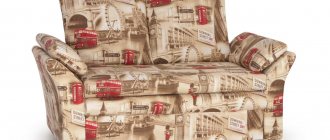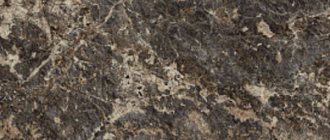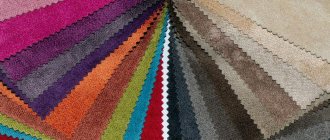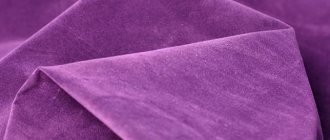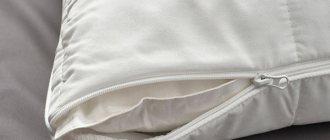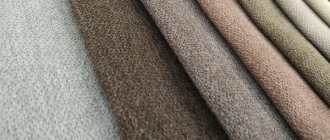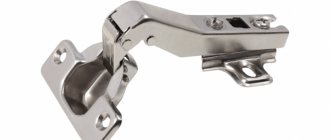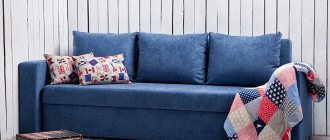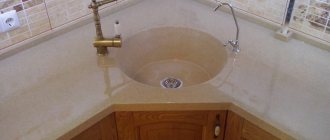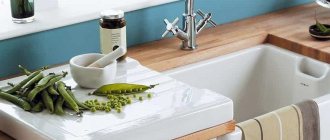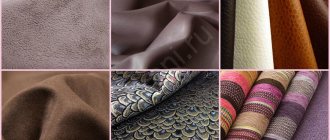When planning the interior of a room, many are faced with the eternal question: what fabric is best for upholstering a sofa? What to choose - matting, chenille, flock, velor or more luxurious varieties? It’s good when upholstered furniture not only fits into the overall design of the room, but also lasts for many years.
When choosing a material, it is important to consider the following factors: type (synthetic, natural, combined), wear resistance, density, peelability, presence of protective impregnation.
We offer you to compare the most popular upholstery fabric options.
A few words about furniture fabrics: matting, velor, chenille.
Since I professionally manufacture frameless designer furniture in the creative workshop RANGA Performance, I am constantly faced with the choice of fabric.
Unfortunately, often an ordinary person does not have much understanding of the difference between one fabric and another, the main thing is that the color or pattern is suitable. But it's not that simple. For furniture, it is necessary to use furniture fabrics containing synthetic fibers, this is necessary so that the material lasts a long time. If a cotton T-shirt or jeans tear or wear out after six months or even a couple of years, then this is of course unpleasant, but not critical and expected, in the end it is not a tragedy, you can buy others. Increased requirements for both abrasion and service life still apply to furniture. If a hole wears out in the most favorite place, then replacing the material will be problematic, and often the entire sofa or armchair is replaced. Expensive and pathetic. Therefore, do not be afraid of the word synthetic; it is the norm in furniture.
Secondly, furniture fabrics differ in the type of thread weaving, i.e. manufacturing method, and hence the division into types of fabrics - jacquard, matting, velor, microfiber, tapestry, chenille.
In this article I will write about three materials - matting, velor and chenille.
Matting Photo material
The photo shows the main feature of furniture matting - the type of weaving of threads.
In a matting, the warp and weft threads form squares arranged in a checkerboard pattern. This is a fairly simple and reliable weaving, which can be double or triple, due to which the matting has a pronounced texture, can have surface convexities and hairiness, as well as such an important characteristic as strength.
A distant relative of matting is burlap, which was made for household needs from cattail, a plant that we often confuse with reeds. Hence the name of the fabric - matting. True, unlike its ancestor, furniture matting meets much higher standards for furniture fabric.
Firstly , thanks to the addition of synthetic fibers such as polyester and acrylic, furniture matting can withstand severe operating loads.
Secondly , furniture matting has such important consumer properties as a wide range of colors, patterns, and textures. It can be wool-like, with a fine raised fuzzy weave, more like cotton, or it can clearly indicate a cozy country style with large, uniform squares. For example, chenille can also be a matting type of weaving, the only difference will be the fleecy twisted thread.
Thirdly , the matting is easy to care for - dry cleaning with a roller or vacuum cleaner, or damp with a cloth/soft sponge dipped in soapy water. If you choose matting with Easy Clean impregnation, the fabric will be as practical as possible.
Another very important advantage of matting is the price, which can compare favorably with materials such as tapestry, jacquard, chenille or microfiber. Of course, there are always exceptions, but often matting, in addition to its natural appearance, allows you to save money.
An example of a RANGA Performance ottoman chair made of matting. The main burgundy material of this pouffe chair is matting, the seat is a furniture tapestry.
Velor Photo material
The main thing that distinguishes velor from other fabrics is the pile. It was thanks to him that velor got its name - from the French velours - velvet, from the Latin villosus - hairy, shaggy.
Types of velor
Velor comes in two types: with cut pile and looped.
Looped velor is used mainly in knitwear - for sewing clothes, dressing gowns, and towels.
Furniture velor has a cut pile. It can have different lengths and intensity, can be directional, have ribbing, smoothing and other complex elements that make it attractive from a design point of view.
We also pay attention to the velor base, giving preference to fabrics with a dense base, since they work better under the load that falls on the fabric in frameless furniture.
Consumer Reviews
Write your impressions in the comments at the end of the page.
Milana “In terms of cladding, it is impeccable! There are a lot of color options.”
Nikolay “I have a sofa with this material. And I can say that it is one of the best furniture fabrics I have ever owned. Among the advantages are strength and durability. The sofa is still like new. There are no puffs or scuffs on it. Great look.”
Anna “I can say from myself that furniture made from this fabric will look like new for a long time. True, it is necessary that, for example, pets do not sharpen their claws on it).”
Roman “As a specialist in the furniture industry, I can write one more plus - it absolutely does not absorb odors and dirt. For example, I had a chair made of a different fabric, it stood in the country. When we brought her home, she could smell the smell of a fire. This can’t happen with chenille.”
Yulia “We covered furniture with this material in 2014, it looks beautiful! Someone spilled coffee on a chair. They cleaned it with antipyatin, but you need to wait no more than 5 minutes. It’s better not to experiment with powder products.”
Lena “I ruined part of the sofa because I wiped it with a wet rag. The stain remains."
Diana “As for care, I can immediately say that it is better to buy special products for cleaning furniture, this applies not only to chenille, but also to flock and tapestry.”
Ivan “I will say that there can be clues on any material. I was able to leave clues at my friends' houses. because there were rivets on the jeans.”
Oleg “I would say this: if you don’t have children or animals yet, then any material will do. But! For example, chenille fabric is more economical among many. So, if you don’t want to spend a lot of money on upholstery, then choose this.”
Ilona “My furniture has survived 4 moves - everything is fine with it. But recently I went with a friend and chose something inexpensive for her apartment. I noticed that chenille is different now, maybe it depends on the manufacturer, but it is thinner than before.”
Zhanna “Here, someone already wrote that they washed the upholstery in the form of chenille fabric very quickly. I have a different review, I can’t clean stains that appeared from everyday life with anything. What have I tried? so be careful.”
Sasha “This furniture looks great in any colors! I recommend it to everyone!”
Lena “The fabric is durable and does not absorb odors. Just don’t treat with water.”
Zhenya “And my cat immediately fell in love with the chenille sofa. I can’t get rid of the corner of the sofa, but that’s a topic for another site).”
Anton “After reviews of chenille fabric, I have doubts about purchasing a furniture set. I'll think about it some more. But the store assured that this fabric looked expensive and did not need to be cleaned often.”
Tanya “I had tapestry furniture, but I liked chenille more for its appearance and durability.
Grigory “I’ll say this – chenille furniture is best suited for offices, rooms where people wait in line, for example. It’s beautiful and can always be cleaned with dry products.”
Chenille fabric for a sofa: pros and cons
Increasingly, for sofa upholstery, buyers choose a pleasant fabric similar to velor or corduroy, chenille, which appeared more than 200 years ago in the USA. The origins of the original fluffy threads come from Europe, and the name itself has French roots (chenille French - caterpillar). The really fluffy fibers wrapped around the base resemble a caterpillar. Today, the choice of practical upholstery fabric, called chenille, is quite wide and in demand. Its popularity is easily explained by its practicality, aesthetic properties and reasonable price.
Which to choose?
The choice of a velor sofa should be approached with great responsibility. The color of the product plays a very important role when choosing. Designers recommend choosing the shade of the sofa that will harmoniously combine with other interior items and become its important component. In this case, it is necessary to take into account your lifestyle, as well as your character. After all, some people like bright colors, while others are delighted with calmer shades.
Each interior style includes a combination of certain color schemes, which should definitely be taken into account when choosing a velor sofa. They all have individual characteristics:
- Red . For some it can cause aggression, but for others it can become a symbol of romance and comfort. The most original way such a sofa complements interior design in the style of Art Deco, High-Tech, Constructivism and Techno.
- Blue. Psychologists say that this color has a positive effect on the human psyche, conducive to relaxation and tranquility. They can often be found in a classic style.
- Green. A velor sofa in this color can become the center of everyone's attention. It goes well with yellow, blue, pink and red items. This shade can cause drowsiness. It complements the Baroque style well.
- Brown. The presence of such a sofa ensures the creation of comfort and coziness. It is used in Country, Empire, Renaissance, Classic and Rococo styles. It goes perfectly with beige, yellow, blue, lilac, orange.
- Black. A beautiful velor sofa in this color looks original in bright and spacious rooms. It goes well with gray, red, yellow, turquoise and burgundy. It is often used in the Minimalist style.
- Grey. A sofa in this color fills the room with clarity and conciseness. It goes well with yellow, red and purple. Used in gothic and minimalist style.
- White. This sofa brings light and newness to the room. Therefore, it can often be found in the Art Nouveau style. Combines harmoniously with golden, beige and gray colors.
Description of chenille
As in the case of jacquard, chenille is not the material itself, but the yarn from which it is woven. Materials with chenille thread are strong, durable, pleasant to the touch and look beautiful. The main advantage of sofa upholstery is the huge number of color and texture options. The characteristics of the fabric provide mainly positive customer reviews.
Arpatek
This material was originally developed for covering car seats.
Arpatek belongs to the category of artificial leather. The fabric has unique characteristics in terms of light stability, abrasion resistance, and tensile strength. It feels like leather with perfect finishing. The materials for making arpatek are viscose, cotton and polyurethane in proportions of 42% -33% -25%.
Comparison of chenille with other upholstery fabrics
The range of upholstery fabrics is huge, unfortunately, it is not limited to one type. Only furniture chenille has several varieties. It’s easy to get confused in the store; the annoying question “which is better” immediately arises:
- Chenille or matting? Chenille or velor? Chenille or flock? Tapestry or chenille?
This table will help you understand the difference between these fabrics.
| Fabric name | chenille | matting | velours |
| Fabric properties | |||
| Description | Soft, dense, fleecy fabric consisting of chenille threads | Rough but soft fabric with a fleecy surface and a silky sheen | Elegant, dense fabric with thick, velvety pile |
| Blade type | Woven, fabric-adhesive | Woven | Woven |
| Compound | Cotton, artificial fibers | Natural: cotton, linen, wool, silk; mixed: natural threads with synthetic fibers (polyester, acrylic) | Natural: cotton, linen, silk; mixed: natural threads with synthetic fibers |
| Colors | Plainly dyed, plain ornament or pattern, printed, woven pattern/subject | Plain dyed, melange, printed | Plain dyed, printed, woven pattern/subject |
| Peculiarities | Soft, elastic, wear-resistant, environmentally friendly, hypoallergenic | Rough, soft, wear-resistant, environmentally friendly, hypoallergenic | Soft, wear-resistant, environmentally friendly, hypoallergenic |
| Cleaning | Dry cleaning, dry cleaning | Wet cleaning: in a washing machine (delicate mode, temperature 30 degrees) without using chlorine-containing products; dry cleaning | Hand and machine wash (delicate mode, temperature 30 degrees) without the use of active chlorine-containing products; dry cleaning |
| Ironing | No ironing | Does not require ironing, but if necessary, can be ironed with a low-heat iron from the reverse side | Does not need ironing |
| Drying | Moisture should be avoided | Away from direct sunlight, no spin | Away from direct sunlight, no spin |
| Where is it used? | Furniture upholstery, wall upholstery, curtains, bedspreads | Furniture upholstery, upholstery of interior pillows, sewing curtains, bags, clothes | Furniture upholstery, upholstery of interior pillows, sewing of bedspreads, curtains, bags, clothes |
| Price | 500-8,000 rubles | 250-4,000 rubles | 300-1,500 rubles |
Story
The matting material traces its history back to the cattail plant, from which peasants wove various things needed on the farm. But then he was rude.
In a more modern form, the fabric found a second wind thanks to Coco Chanel, the famous fashion designer. This fabric came to be called “Chanel”.
Types of fabrics
For your information! Coco Chanel, fascinated by everything Russian, came up with the idea of using burlap and matting in clothes, giving a vector for the development of fabric manufacturing technology.
Upholstery for a sofa "matting": pros and cons
The modern market for upholstered furniture is a variety of shapes, colors, textures. Sofas, as one of the most popular pieces of furniture, are no exception.
When purchasing, it is important to consider not only the appearance of the sofa, but also its functionality and ease of use . Upholstery fabric is one of the important nuances that you need to pay attention to. This is both the “face” of the furniture and a sign of quality, which determines how long the sofa will last.
For those who value practicality and stylish appearance, matting upholstery will be an excellent choice.
A natural skin
Genuine leather is the main facing material for the manufacture of high-quality, “prestigious” upholstered furniture.
Advantages of genuine leather
- Prestigious appearance.
- Efficient and durable in use.
- Durable, not afraid of long-term loads
- Easy to clean.
Disadvantages of natural leather
- High price
- And perhaps the fact that it is not very comfortable to sit on a leather sofa without clothes.
What is matting fabric?
The so-called matting is not a material, but a type of weaving . Depending on the composition and thickness of the threads, you can create fabric of different densities (from medium to very high), structures (smooth to the touch or rough surface), and vary the severity of the pattern. This allows you to use matting not only for upholstering sofas and other upholstered furniture, but also to sew clothes, accessories, and various home textiles from it.
The production of matting is based on the principle of pair weaving : double or triple threads are intertwined in a checkerboard pattern perpendicular to each other, forming a unique ornament of small, slightly convex cubes (diamonds).
For such weaving, both natural materials are used as raw materials - wool, linen, cotton, silk, and synthetic ones - acrylic threads and any polyester derivatives.
Cotton
Natural material. Colors well and breathes. The main disadvantage of cotton can be considered its short service life. To improve the characteristics of cotton, manufacturers coat it with impregnation, which prevents paint from rubbing off and premature wear. Cotton is most often used for children's sofas. Firstly, the material is environmentally friendly and harmless to children, and its short service life will require replacement along with the changing needs of an older child. Sofa for growth.
Advantages of matting upholstery
- High strength and wear resistance . For finishing furniture, choose matting made from double or triple threads, natural or mixed composition - this allows you to create a very dense fabric that is resistant to abrasion and tearing.
- Air permeability – thanks to the weaving method, the matting perfectly allows air to pass through, guaranteeing excellent “breathing” properties of the sofa surface. This upholstery does not absorb foreign odors, which makes it practical to use.
- Preservation of form . Thanks to its high density, the fabric perfectly holds the shape of the furniture, does not wrinkle, does not bristle, does not slide - this ensures a neat appearance of the sofa for a long time.
- Environmental friendliness . Natural threads in the composition guarantee the hypoallergenic nature of the material. Contact with it does not cause irritation even on sensitive children's skin; the use of additional cotton or fleece covers is not required.
- Affordable price . The matting belongs to the medium-cost segment; a very affordable price is available to most buyers. Purchasing a sofa with such upholstery will not put a big dent in your budget, unlike furniture made of leather or velor.
- Variety of designs . For the sofa, you can choose fabric of almost any color from a rich palette of proposals. In addition, the abundance of different models makes it possible to play with texture: for example, choose smoother upholstery for a modern high tech style, filled with chrome surfaces and gloss, or choose a rougher textured fabric, visually similar to burlap, which will fit perfectly into eco and country styles , in a Scandinavian interior.
- Aesthetics - plain fabric looks restrained and elegant, and does not catch the eye with excessive pretentiousness. At the same time, a sofa upholstered in matting becomes an ideal “background” for decorating with original accessories - bright pillows, napkins in rich colors, any paintings on the wall nearby.
- Universal appearance - matting upholstery will fit perfectly into both modern interiors and traditional classics. All that remains is to choose a texture and color that will harmonize with the surrounding environment.
Eco leather
This type of fabric is very similar to natural leather, and is not inferior to it in terms of environmental friendliness.
This material is obtained by applying porous polyurethane to a base of dense cotton fabric. The result is a wear- and temperature-resistant fabric with a breathable surface that allows air to pass through well, which contributes to its impeccable environmental friendliness.
The surface texture both in appearance and tactile sensations resembles natural leather. The only significant difference is the price. Eco-leather is several times cheaper than genuine leather.
Disadvantages of matting fabric for sofa upholstery
- The ideal scratching post . Practice shows that pets especially love matting upholstery, using it as a scratching post. Despite its high strength, the material, of course, quickly becomes unusable with such an active attack on its integrity.
- “Flowability” when cutting, sewing and during the upholstery process - due to the peculiarities of weaving, the fabric has to be used not very sparingly, leaving large allowances along the edges so as not to make a mistake with the size of the sofa.
- Susceptibility to burnout . It is better to place furniture with matting upholstery away from the window - where the sun does not hit. The material is not highly resistant to ultraviolet radiation, so under prolonged exposure to sunlight, the color may lose intensity and fade.
- Inability to wash . The upholstery of a sofa made of matting cannot be washed, and for removable furniture covers only hand washing in cold water is allowed - without spinning, without using abrasive detergents. Due to its wrinkle-resistance, the fabric does not need to be ironed, but if such a need arises, it should be ironed with a non-hot iron from the wrong side of the cover.
- Laconic appearance . Despite its versatility and harmonious fit into any interior, matting is unlikely to appeal to those who appreciate original decor, love fabrics with embroidery and prints, and prefer emphasized luxury of the interior. In comparison with such upholstery, matting looks quite unpretentious.
Boucle
The bouclé fabric looks like a shorn lamb. Boucle means curl in French. A characteristic feature of this tissue is the presence of dense nodules protruding on the surface of the tissue. The fabric has an original decorative look. A particularly decorative effect is achieved through the use of threads of different colors. Boucle is a fairly durable material.
Advantages of bouclé
- Original appearance
- Low price
Disadvantages of bouclé
- Afraid of sharp objects. Contact may result in fabric ripples.
- Due to the porous surface, the fabric is quite easily soiled
- If soiled, it is necessary to immediately remove the stains with a clean cloth and mild soap;
- It is not recommended to rub stains; you need to blot them, then (if necessary) treat them with soapy water using a soft sponge and blot again with a clean cloth.
Conclusion
Matting fabric is one of the best materials for upholstery of upholstered furniture. Durable, practical, beautiful fabric finds a place in almost any interior, looks decent, and is used with convenience and pleasure. The main disadvantage can be considered the increased love of pets for this type of fabric - matting can quickly lose its presentation under the influence of soft paws and sharp claws. This problem, as modern manufacturers claim, is also being gradually solved: a special impregnation of water-based glue makes the matting more resistant to snags.
Having opted for a matting, you can be sure that the variety of modern design solutions will allow you to choose a sofa that will perfectly fit into the interior of the room and the whole house as a whole.
Teflon flock (courtisan)
A modern type of upholstery fabric. It belongs to a new generation of fabrics. The fabric fibers have Teflon protection at the molecular level. Thanks to the presence of Teflon, courtesan is highly resistant to contamination. easy to clean. One of the qualities of this fabric is its good resistance to pet claws. If you have animals in your home, take a closer look at Teflon flock sofas
How to clean a velor sofa at home?
If stains from food and drinks, as well as other origins, appear on upholstered velor furniture, wet clean the surface. In doing so, observe the following rules:
- Start cleaning immediately after a stain appears; the longer it remains on the surface, the more difficult it will be to wash;
- Do not rub the surface under any circumstances, as you risk damaging the pile;
- your movements should be careful in the direction of the pile;
- do not use aggressive chemicals, acids and alkalis, or hard brushes for cleaning;
- as a detergent, use a solution of laundry soap and water, moistening a sponge or soft rag with the product;
- You can remove stubborn stains using a solution of alcohol and water; you can also apply a mixture of salt and soda to the stain, leaving the product on the surface for 2-3 hours.
Velor is a velvety material used as upholstery for upholstered furniture. The material attracts with its amazing softness and chic appearance. A velor sofa will add comfort and sophistication to the room. The material does not lose its qualities over a long period of time and requires simple but regular maintenance.
Source: hoznauka.ru
Caring for velor furniture
If you decide to buy velor furniture, be prepared for the fact that the material requires special regular care. The surface practically does not repel dust, so stains will appear on a sofa or armchair quite often. To at least slightly prevent their occurrence, have your upholstery professionally cleaned with a steam generator every six months or a year. Steam will not only clean the surface, but also destroy bacteria and microorganisms.
Carry out regular dry cleaning with a vacuum cleaner at least once every 7 days. Buy a special brush and roller for caring for velor, which will collect stuck lint and dust.
Quality criteria
The quality of upholstery is determined by several factors:
- composition (percentage of natural and synthetic components);
- density (ability to withstand regular loads);
- abrasion (appearance with frequent use);
- pillability (how quickly the surface of the furniture peels);
- coloring (color fastness to ultraviolet radiation);
- ability to pass air;
- fire resistance (flammability of upholstery). Each criterion requires detailed study.
- Compound
During the production of upholstery fabrics, natural and synthetic (artificial) components are used. Their percentage determines how durable and wear-resistant the fabric will be. Materials made from natural fibers are environmentally friendly, hypoallergenic, and allow furniture to breathe. However, one of the shortcomings is the short service life. Synthetic or artificial upholstery is resistant to mechanical damage, temperature changes, exposure to the sun and moisture. They retain their original appearance for a long time even with intense loads and regular use.
To preserve the environmental friendliness of materials, while giving them strength and durability, manufacturers combine synthetic and natural fibers in different ratios.
When choosing furniture fabric, density is one of the key indicators that needs to be taken into account. It determines how wear-resistant and durable the fabric will be. Density is determined by the quality of the raw material and texture (complexity of weaving). The denser the material, the:
- it is more hygroscopic (does not allow moisture to pass through, retains moisture on the surface);
- lower air tightness;
- longer service life (high-density ones last longer, withstand heavy loads, are tensile-resistant);
- its hygiene is lower. This applies to fabrics made from high-density synthetic fibers. Dust accumulates in them, fungus and harmful bacteria can develop. The strength and wear resistance indicator is determined by the percentage of natural and synthetic fiber in the composition and the method of weaving the threads. For finishing materials, the minimum density is 200g/sq.m.
